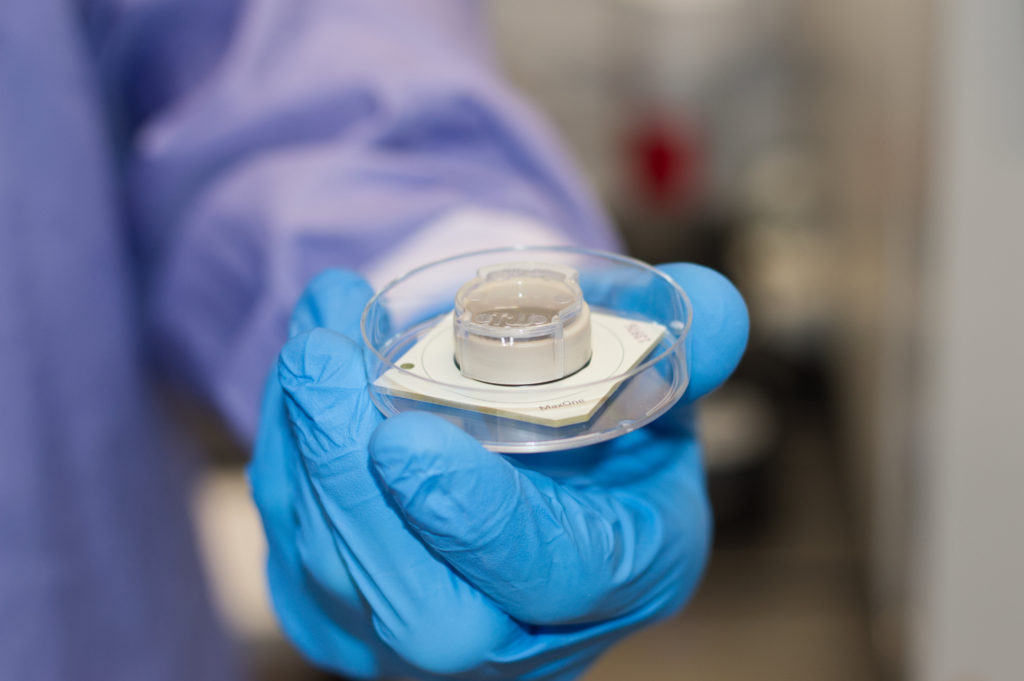Here’s something that you don’t hear every day: we may be on our way to using computer chips that incorporate human neurons. Cortical Labs, which was founded in Melbourne, is doing just that.
For years, one of the company’s co-founders, Hon Weng Chong, developed medical devices with his team at his previous startup, CliniCloud. Then, in 2017, Hon observed that there was intense excitement about the applications of artificial intelligence, with many companies using convolutional neural networks, particularly when it came to analyzing visual data, which were essential for developing products like self-driving cars.
The race to develop robust AI and machine learning algorithms required massive volumes of data—and the means to process these data sets. Silicon wasn’t enough; Hon and his co-founder Andy Kitchen decided to heed the calls of titans in the realm of AI—Geoffrey Hinton ad Demis Hassabi—to develop processing capabilities using neuroscience. The pair founded Cortical Labs in 2019.
“There was some interesting work being done in Japan at that time, where neurons were learning how to perform computational tasks. It occured to me that we could take this, make it reproducible and scalable, and end up with a biological computer,” said Hon. “The more we experimented in this space, the more intrigued we became about the possibilities of this system.”
The scientists at Cortical Labs began exploring the idea of combining neurons—exactly like those in our brains and nervous systems—with microelectronic arrays with 22,000 electrodes to create computer chips that can think of their own. The team called their hybrid “Dishbrain.”

Dishbrain’s neurons communicate with one another via electrical impulses, which are then picked up by the electrodes on the array to provide a macroscopic picture of the chip’s electrical activity. The neurons can also be stimulated with jolts of electricity, which means messages can be sent to these neurons to encourage specific actions.
Because Dishbrain is biological, it is not trained by being programmed with traditional code, which typically involves a structured set of steps and looped processing. Instead, Dishbrain’s neurons are able to naturally organize themselves and carry out actions based on their training, which involves a neat signal like a sine wave that Cortical’s researchers believe Dishbrain enjoys as positive reinforcement, and random noise as “punishment” to discourage erroneous actions.
Cortical’s scientists used this training regimen to teach Dishbrain how to play Pong, the classic video game where two players move paddles to hit a ball back and forth, like table tennis. When hooked up to the controller, Dishbrain would receive positive stimulus whenever its paddle was positioned to hit the ball successfully, and noisy data would be delivered if it failed to do so.
Within five minutes of repeating this feedback cycle, Dishbrain is able to learn the objectives of Pong and play the game. This is much faster than the 90 minutes required to train most AI systems.
These are the first steps to realizing Dishbrain’s potential, Hon believes. In the field of neuroscience, scientists have posited the criticality hypothesis, which is rooted in the belief that the brain functions at a critical point between randomness and order, where information processing abilities are maximized. It has been hypothesized that at this point of criticality, the brain enters a flow state, and can become engaged in a task and ignore all distractions.
Cortical’s scientists found that Dishbrain’s neurons exhibit critical levels of activity when it is playing Pong, but remain at sub-critical levels when it isn’t hooked up to the game. This difference made it possible for the startup’s scientists to identify the specific neurons that engaged in this play, leading to ideas about how to improve the chip’s cognition and memory skills.
Hon hopes that Cortical’s work related to Dishbrain will lead to progress in the field of robotics, especially in situations that require fast responses, such as when an entity encounters imminent threats. At present, robots are typically unable to respond instantaneously to changes in their environment due to the chaotic and random nature of real-world data.
Simply put, most robots are unable to process the vast amounts of data that is ingested and processed to generate simulations to formulate plans of action. But Dishbrain’s ability to process situational data biologically may shorten the length of time to reach those decisions.
While Cortical Labs is still based in Melbourne, it is in the process of moving to Singapore and has plans to open laboratories in the city-state soon. Hon specifically cited Singaporean policy that favored startups developing groundbreaking technology, such as those in the biotech industry.
“Our line of work requires a significant amount of investment in the R&D phase, and Singapore is very strong in this aspect, and that is something we want to align ourselves with,” said Hon.
For now, Dishbrain spends time playing simulated table tennis. But a few years down the road, who knows what it’ll achieve?

